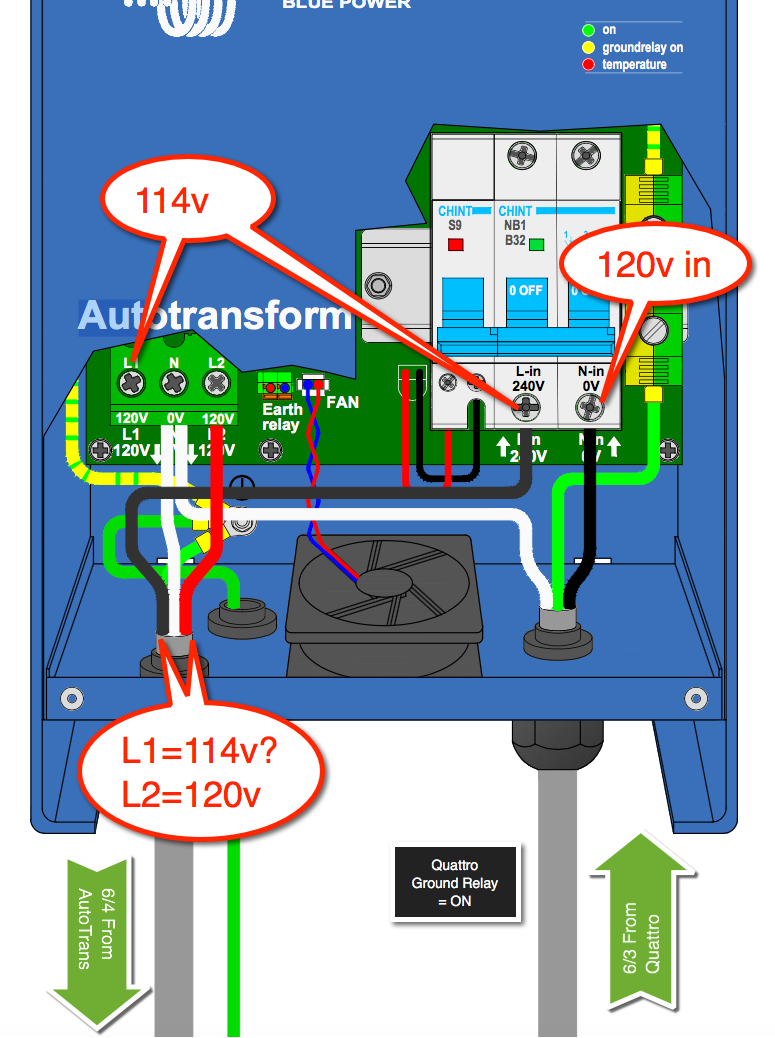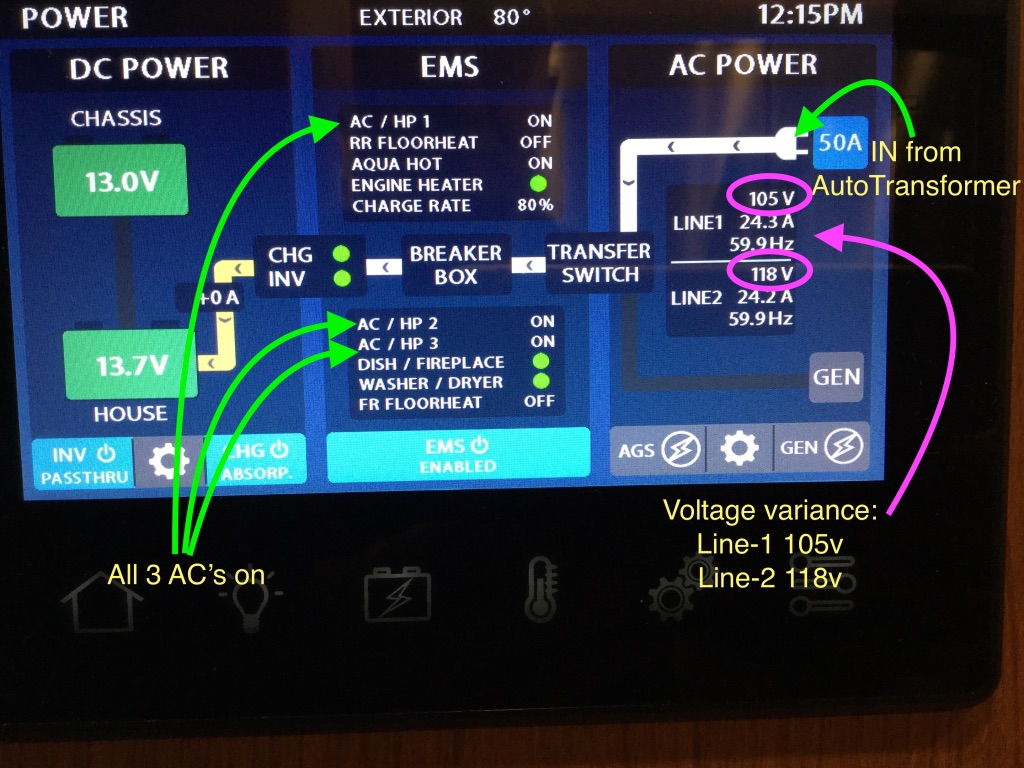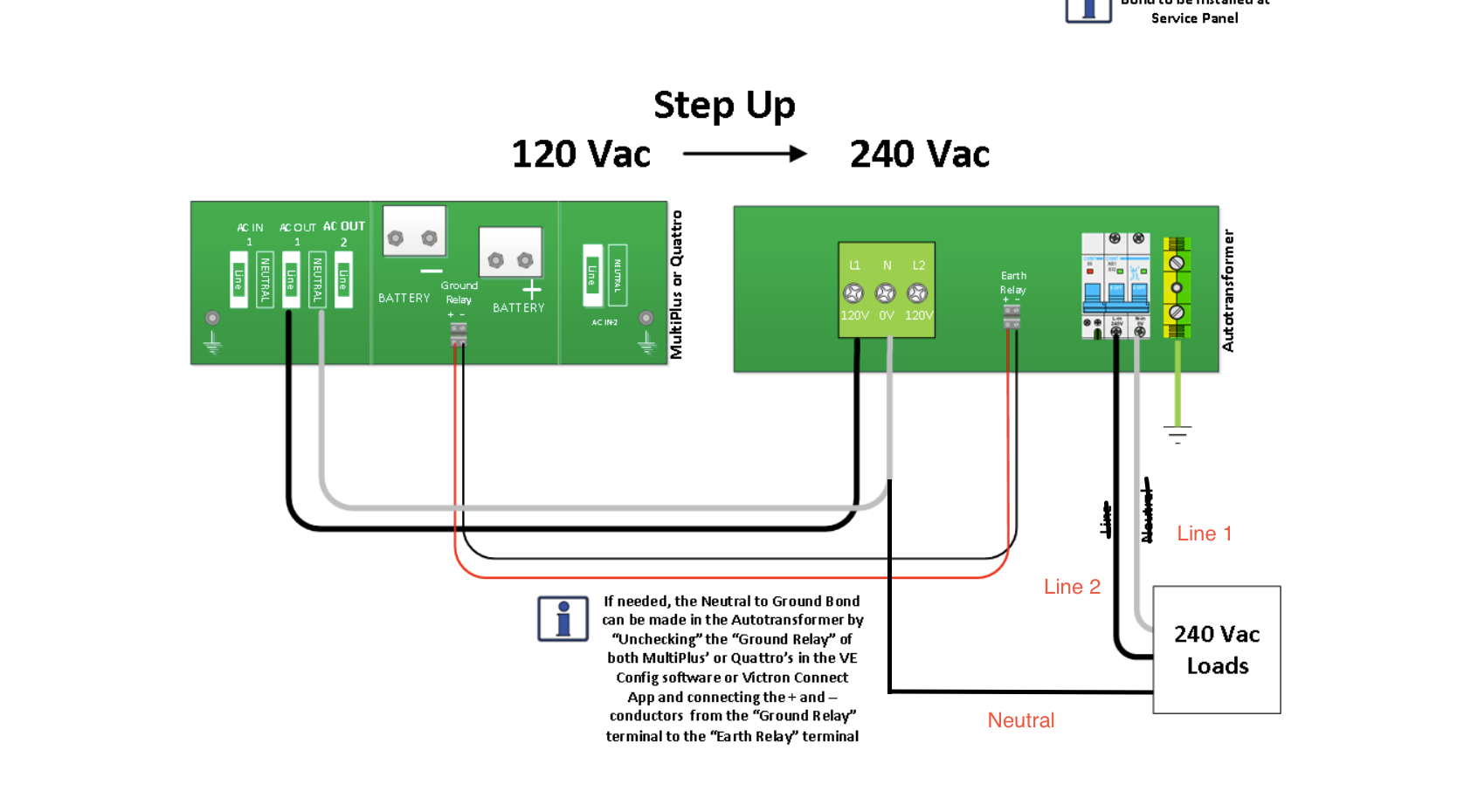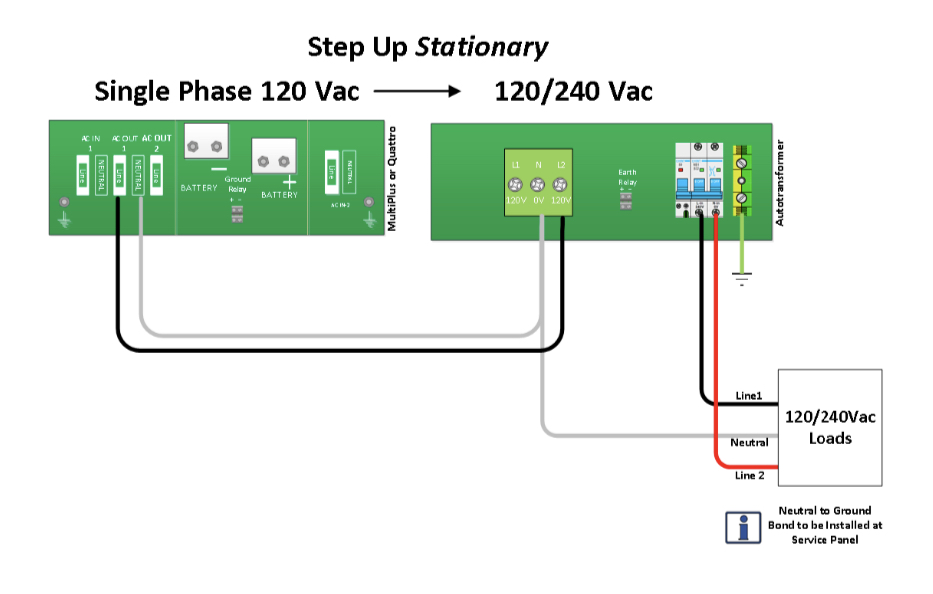I am having an issue with the Autotransformer output voltages - 114V on L1 and 120V on L2 (with no load)
120V current is supplied by a Quattro 48V / 10000 / 140-100/100 to the 100A Autotransformer. I'm using the AT to provide a split-phase 120/240v supply to the 50A main break panel in my RV
I have wired the AT connections according to the diagram #3 shown on the system schematics page from the Victron website: (https://www.victronenergy.com/upload/documents/AT-3-split-phase-120V-to-120-240V-with-Quattro-120V.pdf)
The Ground Relay in the Quattro is set to ON and is correctly grounding the Neutral to earth.
Here are the voltages I read at the terminals:

The problem I have with this is that the voltage on L1 decreases a lot with load, and when occurs equipment will pull more current to compensate for the lower voltage.
Here is a pic of my RV control panel, showing the disparity in voltage between L1 and L2. Even though there are 2 air conditioners on Line2 it has only dropped 2 volts - Line1 dropped from 114v to 105v. This can't be good.

Questions: 1) - Is this method of wiring correct, and 2) what is causing the voltage discrepancy?
Thanks!
Aug-31: Editing this in an attempt to make the question visible again. I'm thinking of sending this AutoTransformer back to Victron as it is not performing to expectations. I have seen voltages as low as 96 volts on L1, at which point my UPS shuts down my computer, and various other circuits shut down. Not happy...
I'd appreciate a comment from anyone who has had experience with an AutoTransformer.


 In the above picture it shows taking 120v from a 120v inverter and using it to generate 120/240v split phase. But let's just pretend that inverter is actually your Onan generator instead.
In the above picture it shows taking 120v from a 120v inverter and using it to generate 120/240v split phase. But let's just pretend that inverter is actually your Onan generator instead.
